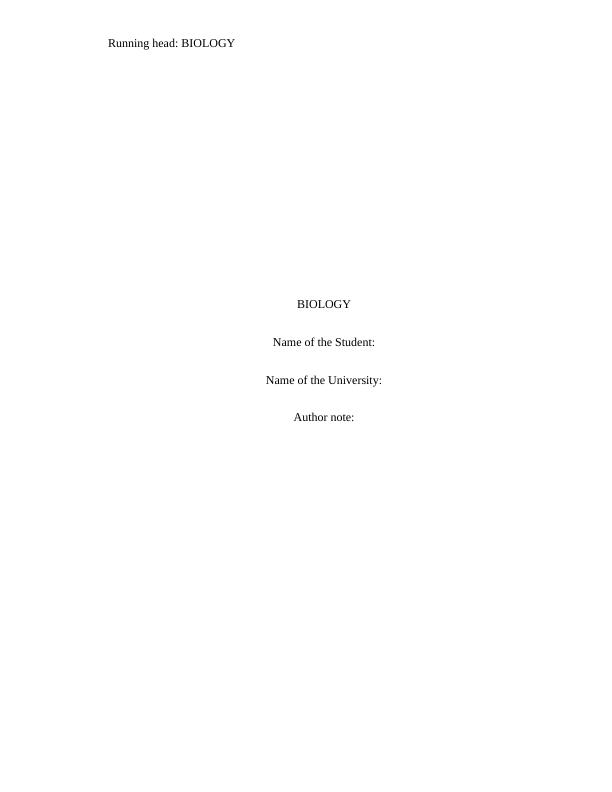Biology: Nucleus, Rough Endoplasmic Reticulum, Cell Membrane, Glycolipids, Cholesterol, Membrane Proteins, Transport Proteins, Carbohydrate Group, Bulk Transport
10 Pages2140 Words257 Views
Added on 2023-05-31
About This Document
This article discusses the structure and function of the nucleus, rough endoplasmic reticulum, and cell membrane. It also covers glycolipids, cholesterol, membrane proteins, transport proteins, carbohydrate group, and bulk transport.
Biology: Nucleus, Rough Endoplasmic Reticulum, Cell Membrane, Glycolipids, Cholesterol, Membrane Proteins, Transport Proteins, Carbohydrate Group, Bulk Transport
Added on 2023-05-31
ShareRelated Documents
End of preview
Want to access all the pages? Upload your documents or become a member.
Surname 18. Name. Professor. Institution. Course. Date.
|23
|3642
|7
Cell Biology and Biochemistry
|8
|2140
|1
Biology in Everyday Life: Cell Structure and Function
|5
|1355
|94
The structure of the cell. 9 The structure of the cell
|14
|2919
|55
Fluid Mosaic Model: Structure and Components of Cell Membrane
|23
|4299
|480
(PDF) Protein Synthesis - Assignment
|4
|696
|211



